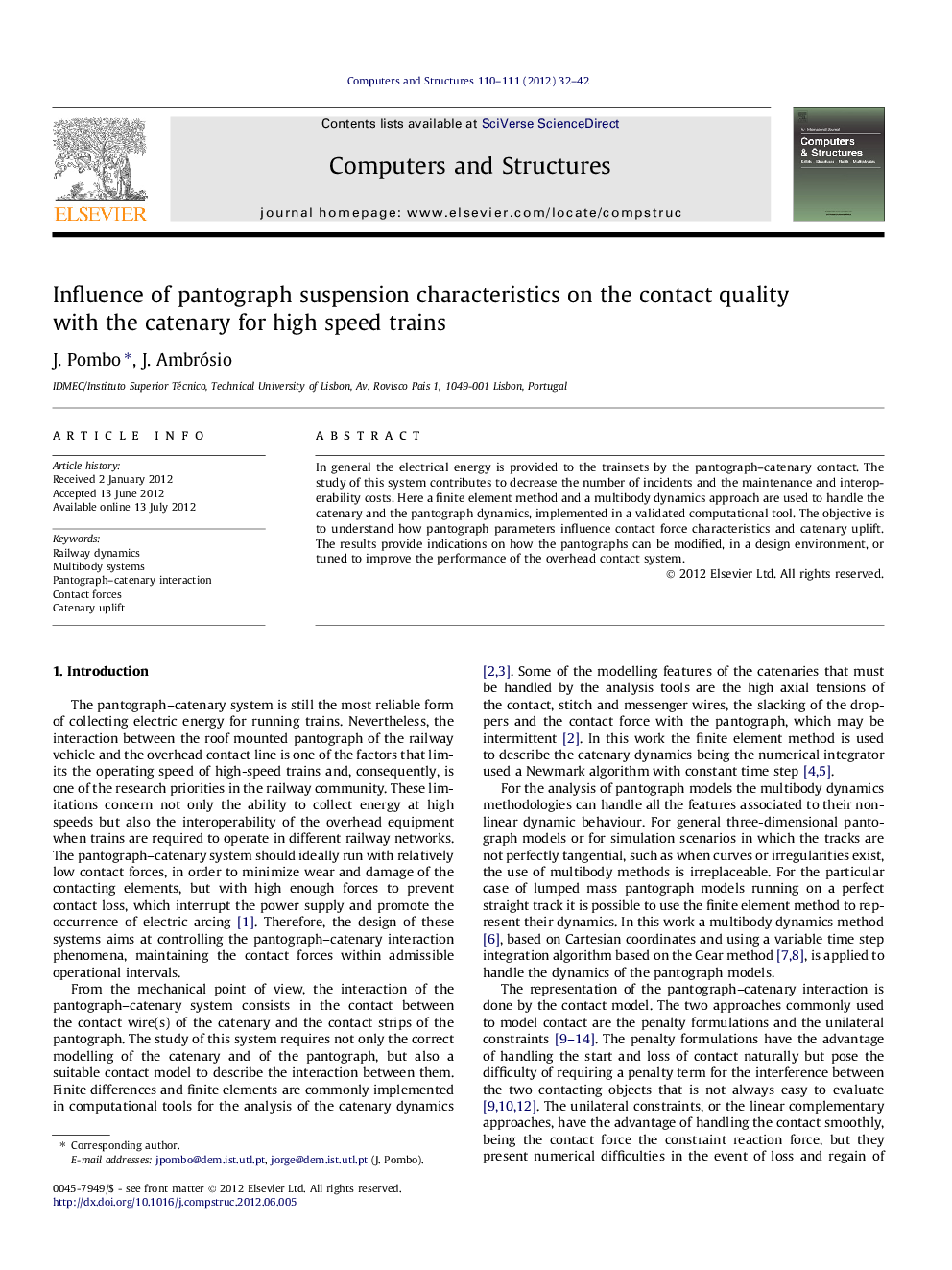| Article ID | Journal | Published Year | Pages | File Type |
|---|---|---|---|---|
| 510777 | Computers & Structures | 2012 | 11 Pages |
In general the electrical energy is provided to the trainsets by the pantograph–catenary contact. The study of this system contributes to decrease the number of incidents and the maintenance and interoperability costs. Here a finite element method and a multibody dynamics approach are used to handle the catenary and the pantograph dynamics, implemented in a validated computational tool. The objective is to understand how pantograph parameters influence contact force characteristics and catenary uplift. The results provide indications on how the pantographs can be modified, in a design environment, or tuned to improve the performance of the overhead contact system.
► Pantograph–catenary interaction is a very important issue for railway community. ► A validated computational tool that studies with detail this interaction is presented. ► Real data from the French high speed pantograph and catenary systems are used. ► Contact forces and catenary uplift resulting from pantograph passage are studied. ► The most important parameters for the performance of the overhead contact system are analysed.
